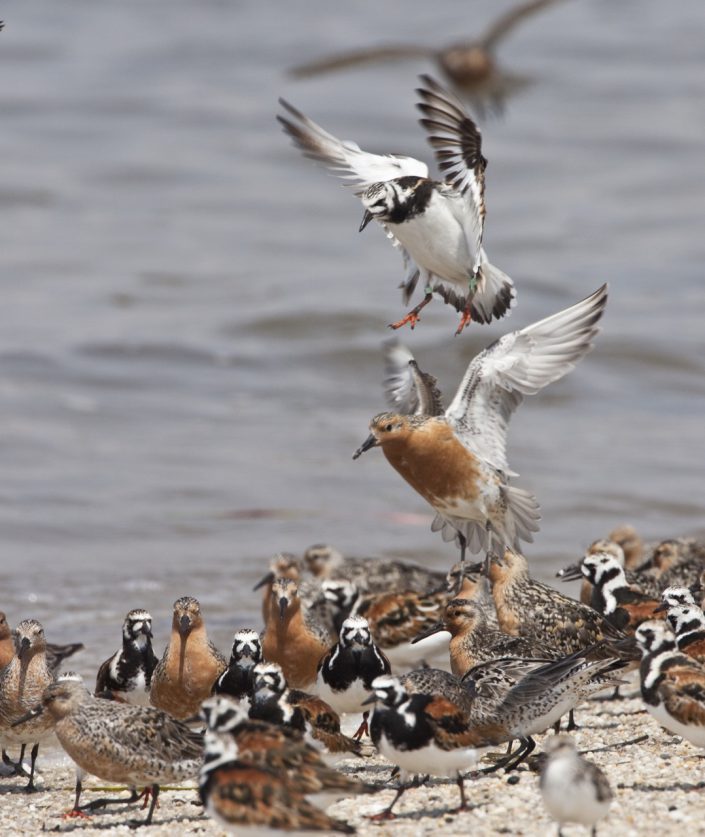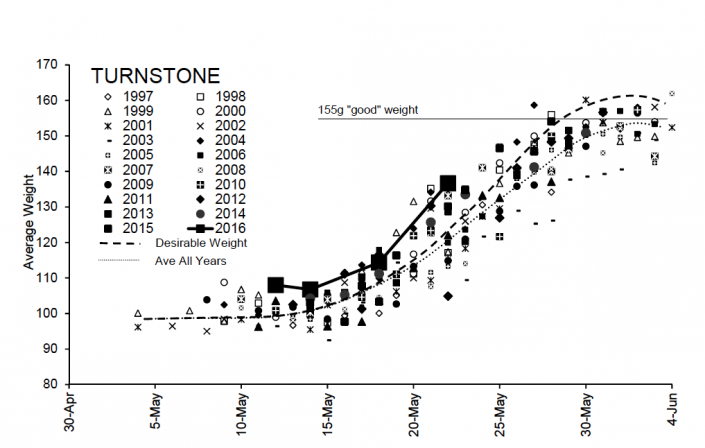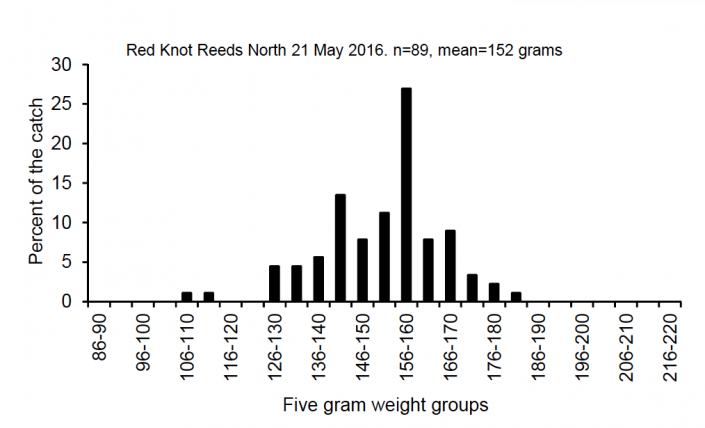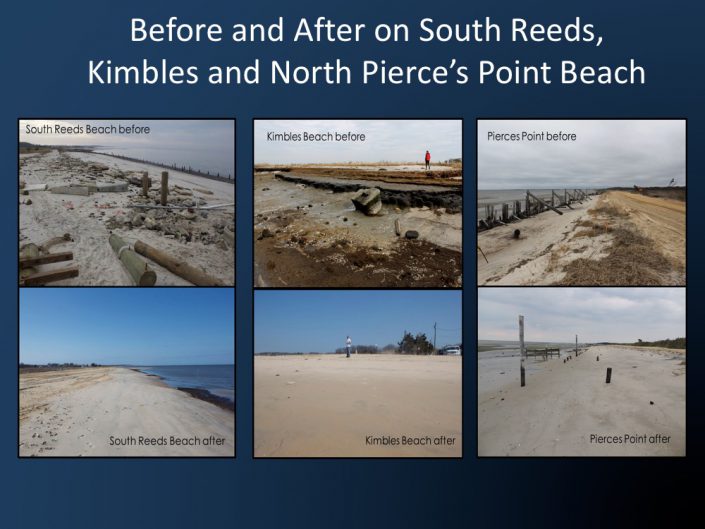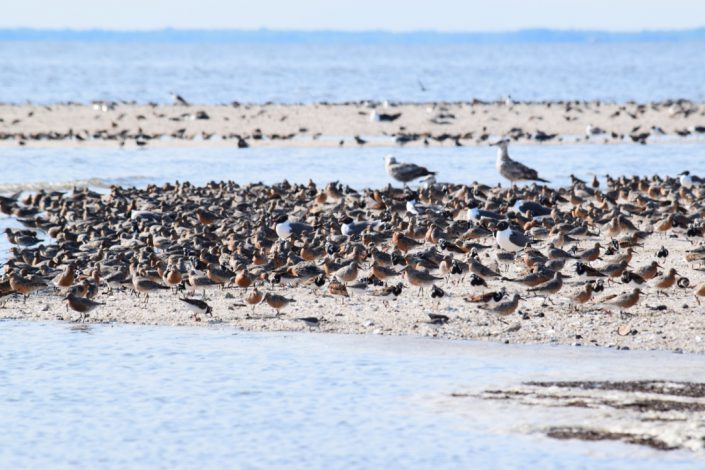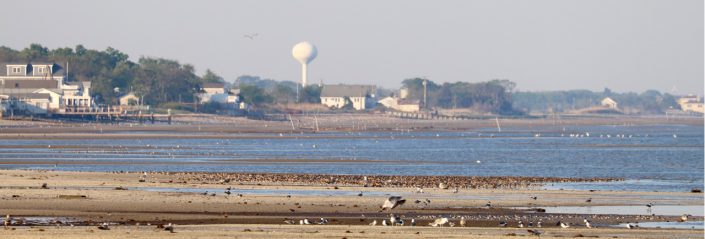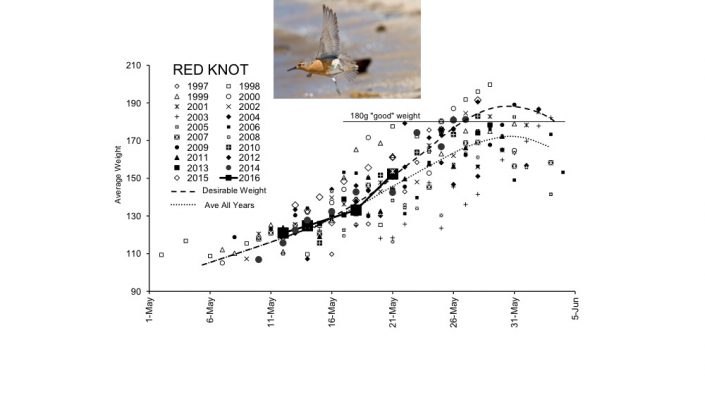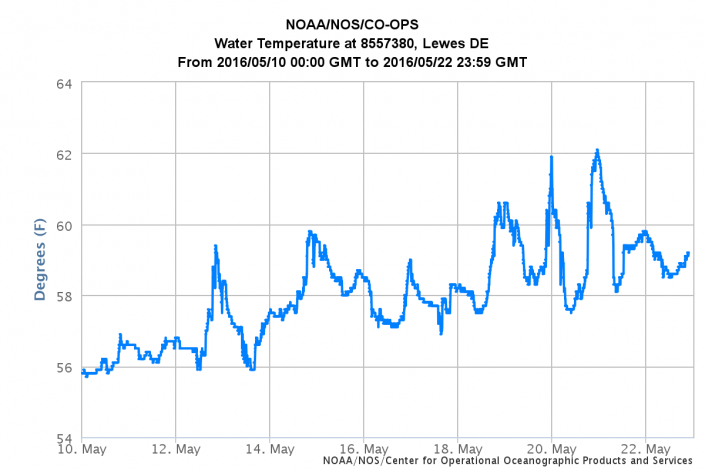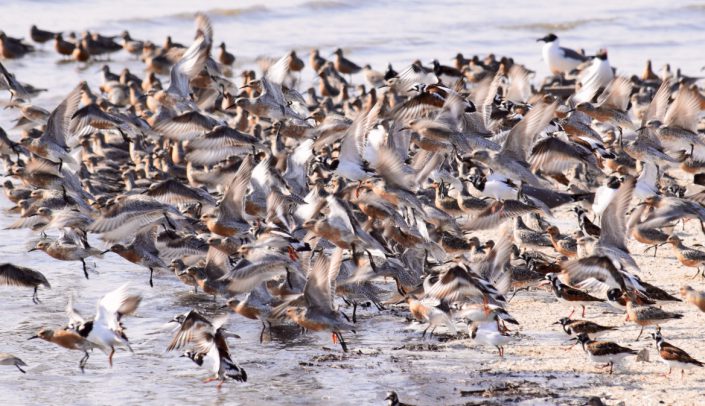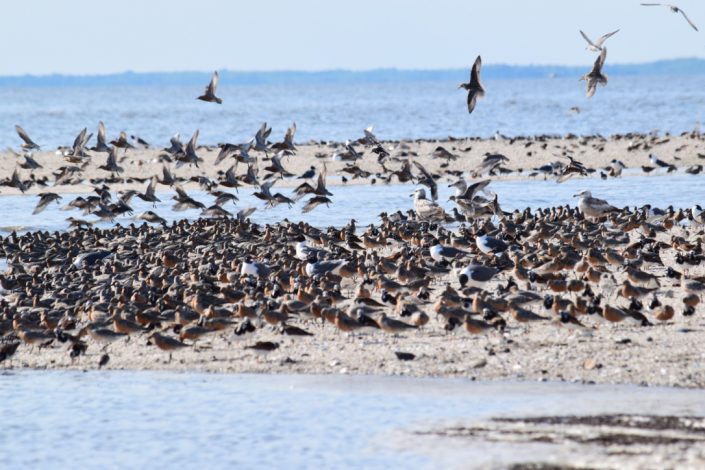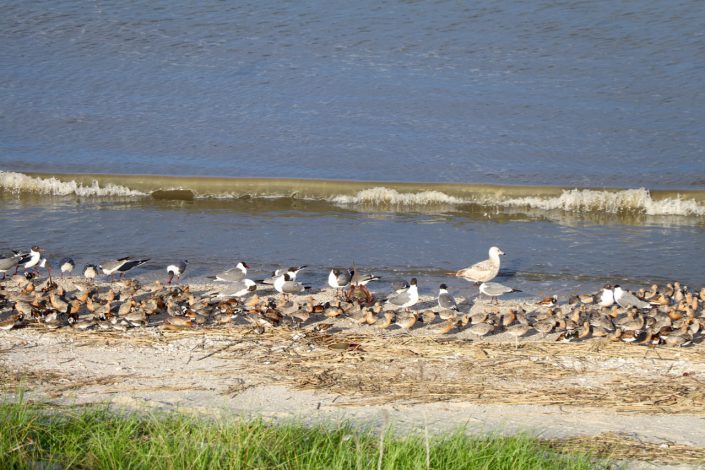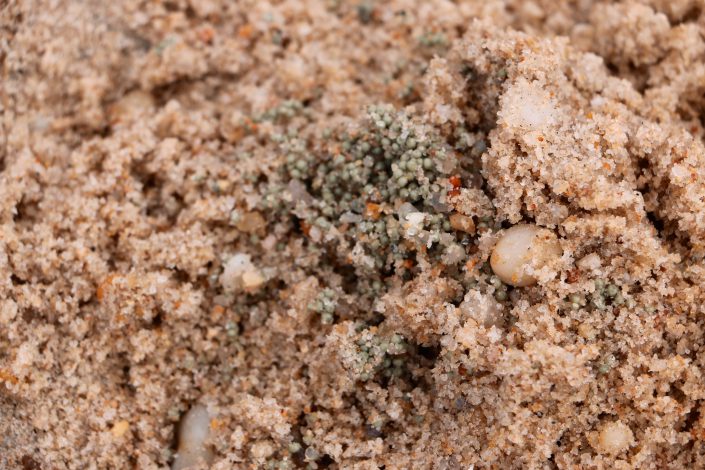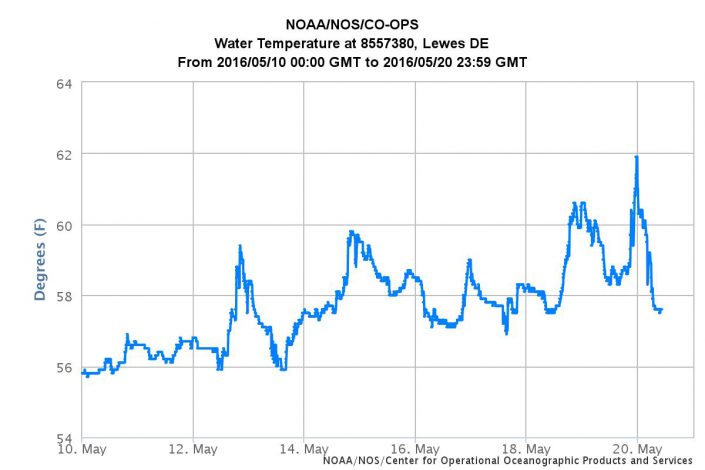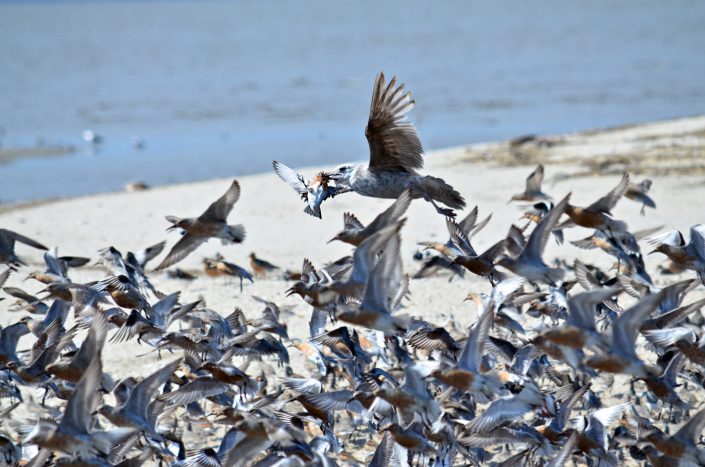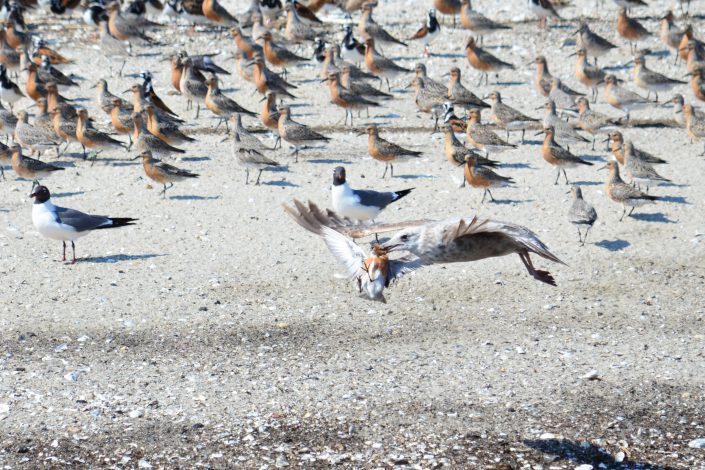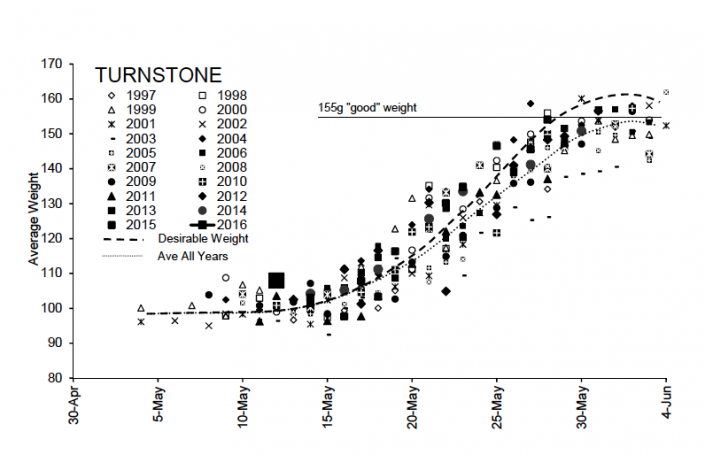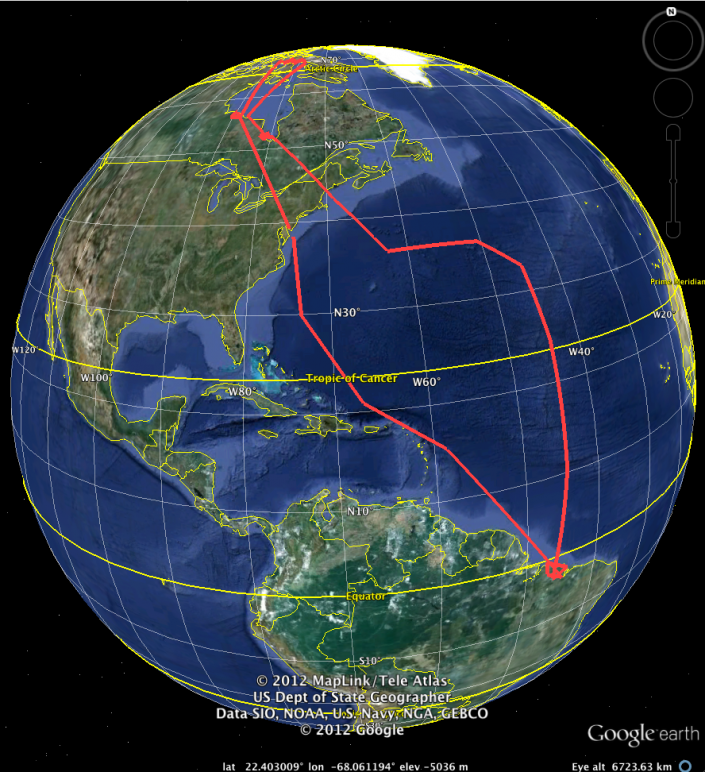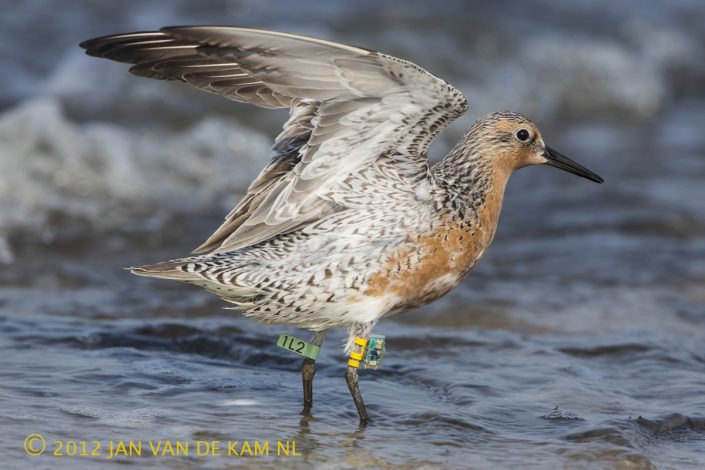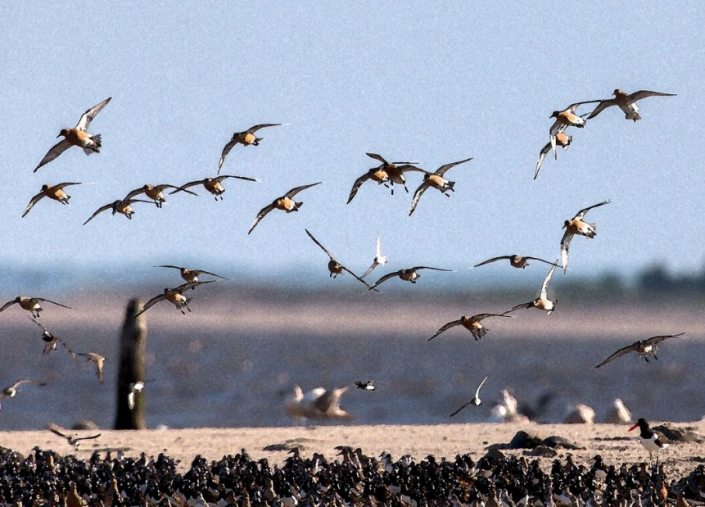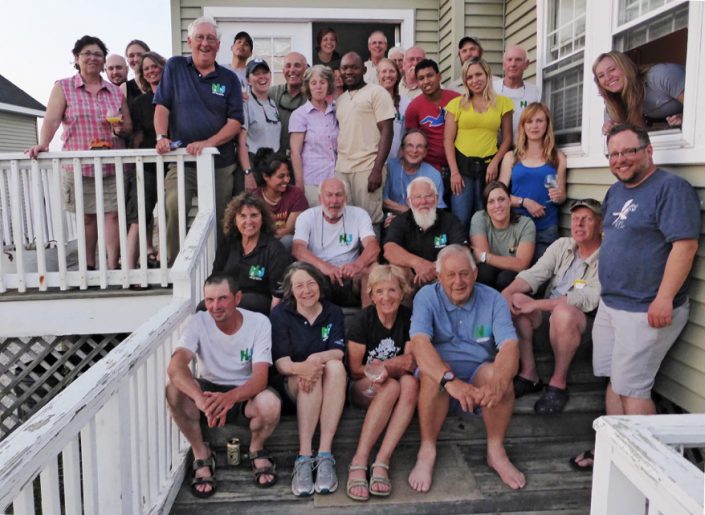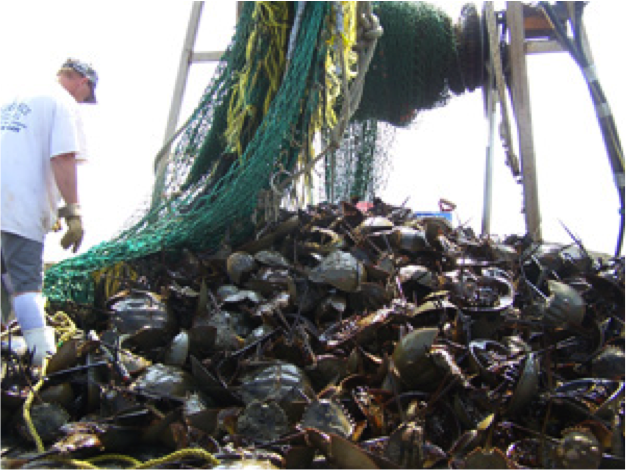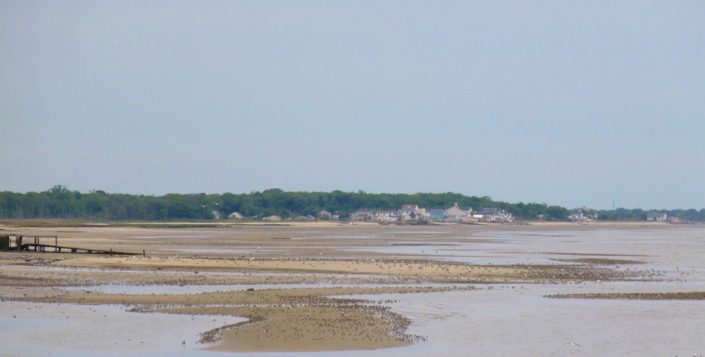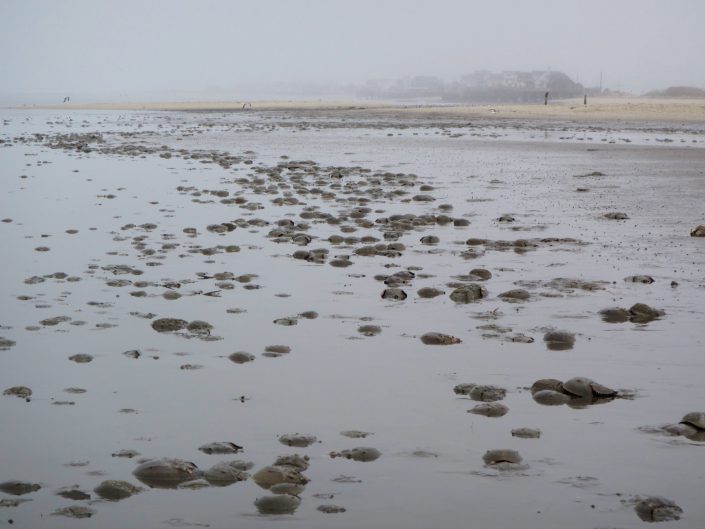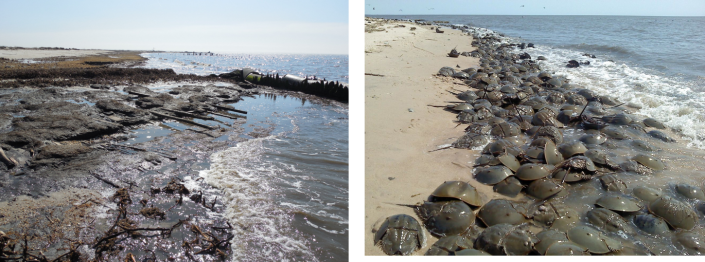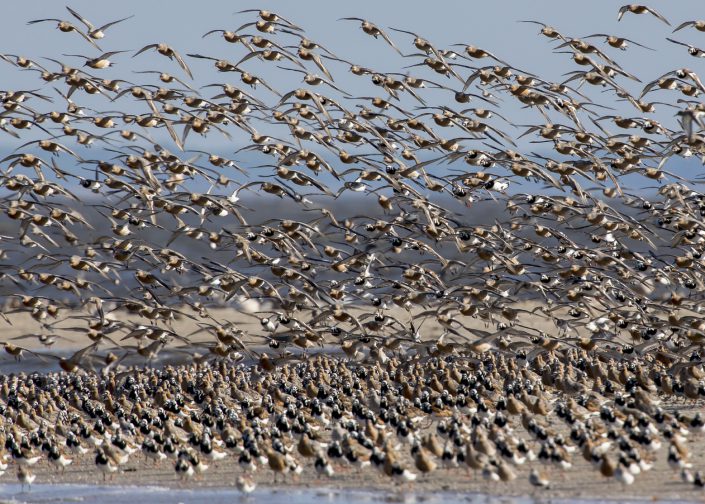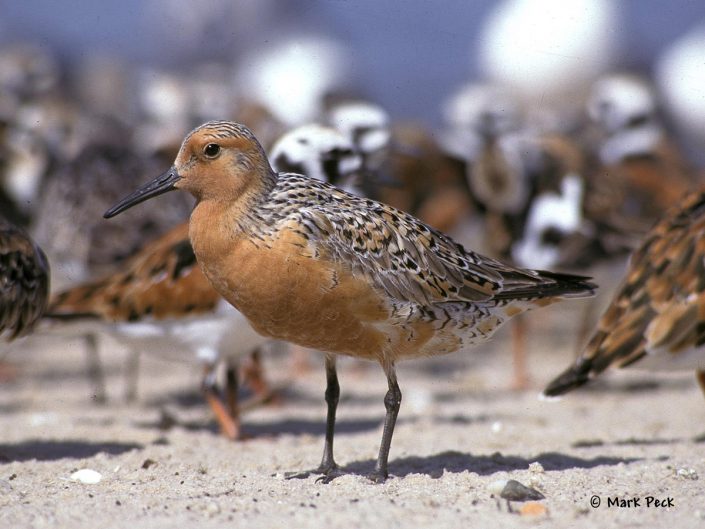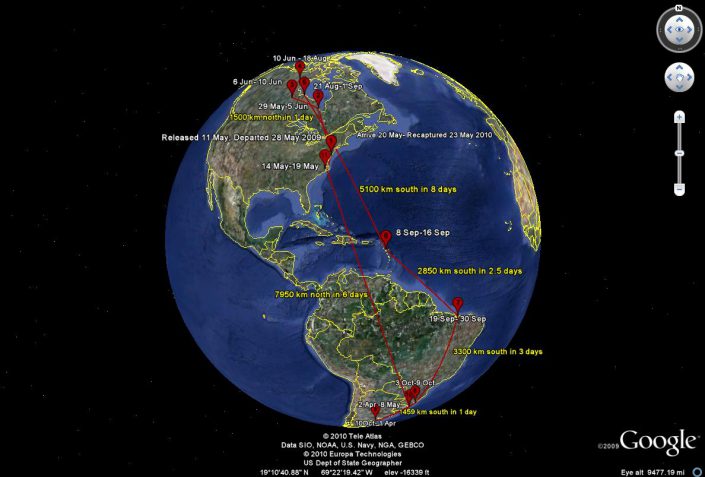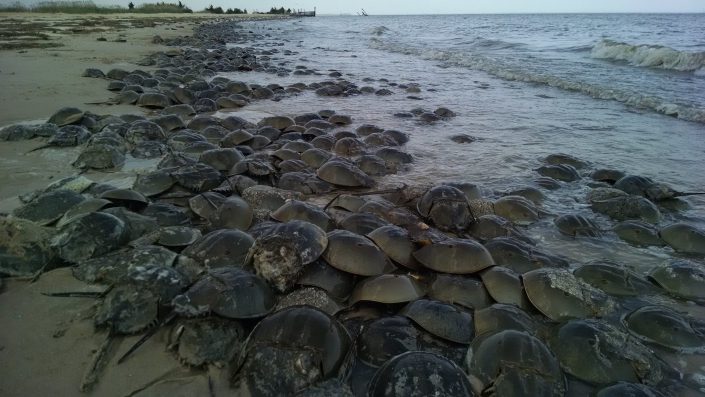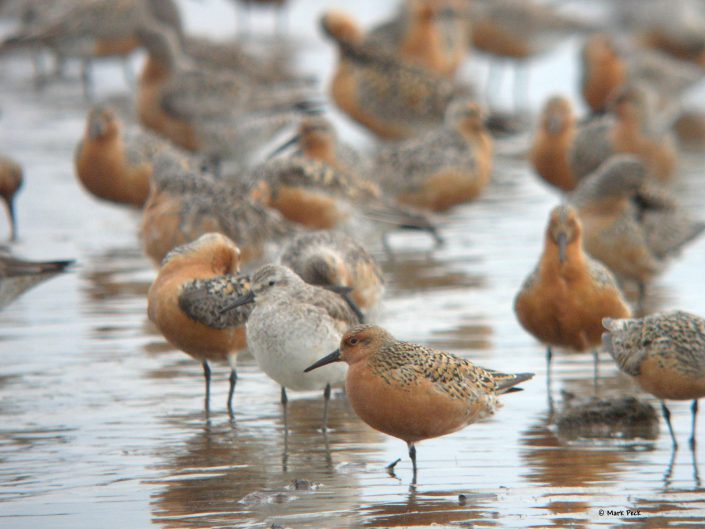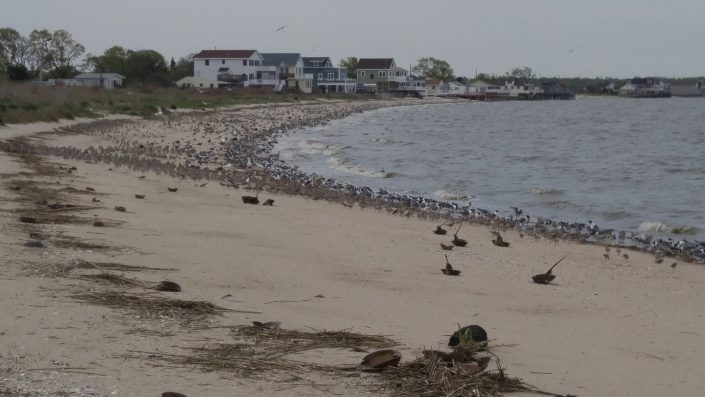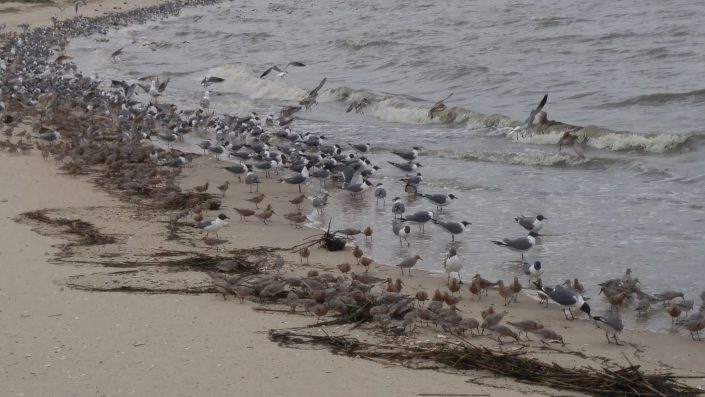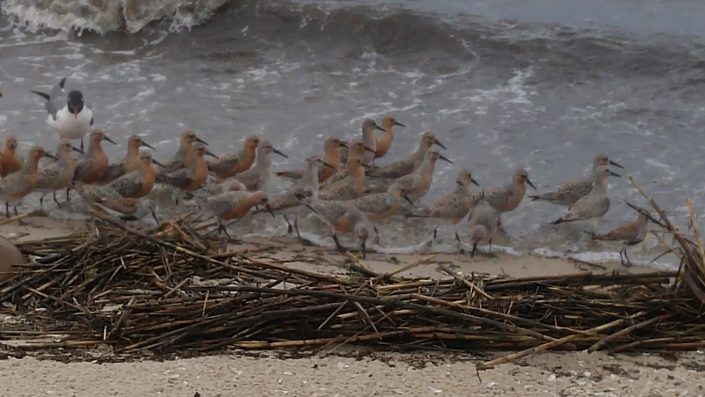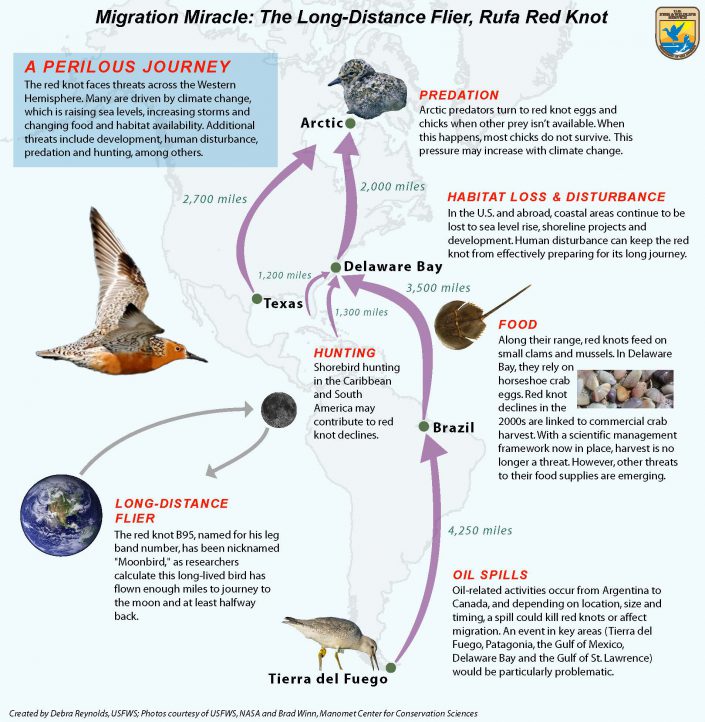A Job Well Done!
One in a Series of Updates on the 20th Year of the Delaware Bay Shorebird Project
by Dr. Larry Niles, LJ Niles Associates LLC
On our final effort to trap shorebirds on Delaware Bay, we had the remarkable opportunity to watch sanderling and ruddy turnstones lift off for the Arctic. We first saw them feeding on the wave-tossed shoreline within the protected area in Villas; 1500 birds weaving as a single thread 5 deep with the contours of the wave, acting like a flying flock on the ground. Then a disturbance, a crow flying low down the shoreline and 2000 birds fill the sky. Most settled again but one group of about 300 flew more with greater determination than the rest. Still low but gaining altitude the flock wavered, and a mutinous band peeled away deciding against the departure returned to the safety and abundant crab eggs on the shore just north of us. The other 150 grew more determined, more structured and rose slowly as they powered their way north. Then they disappeared into the Northern sky.
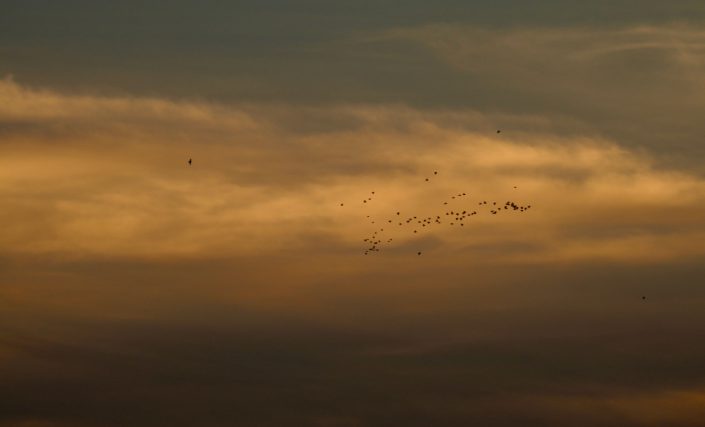
Shorebirds departing Delaware Bay for their Arctic home, 2500 miles away stand as one of the most awe-inspiring and rewarding parts of our stopover project. They usually start in the early evening under a blue sky drenched with the glow of the setting sun and continue until near dark. They almost always go with a favorable southerly breeze and at least a clear sky in the north. Thousands of all the species after getting fat on the Bay’s bounty of horseshoe crab eggs – red knots, ruddy turnstones, sanderling, semipalmated sandpipers, short-billed dowitchers and dunlin – lift slowly as they fly along the Cape May peninsula coast towards Dennisville and beyond.
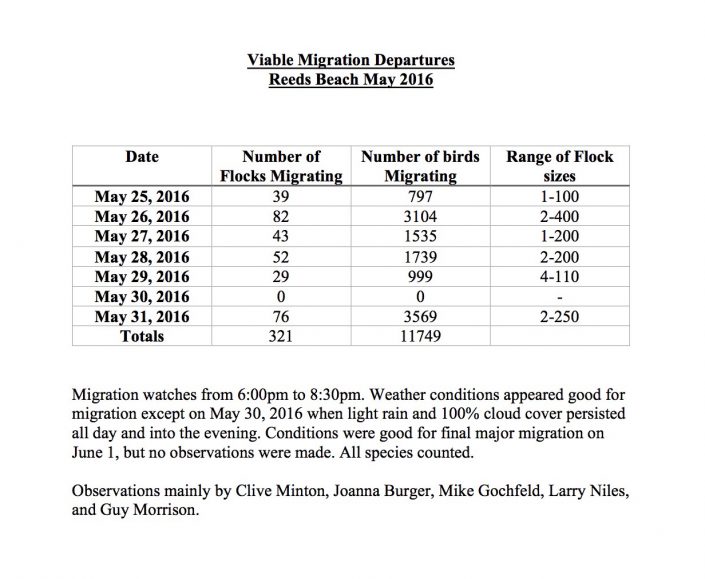
They are dangerously overloaded with fat. Two birds highlighted the importance of this. On May 30 we caught 97 knots, 168 sanderlings and 75 ruddy turnstones. Among each species were individuals of extraordinary weight. One bird weighed 242 grams, fully 120 grams higher than the fat free weight! They cart this load, like a plane with extra gas tanks, to fly two days to the Arctic islands of Canada. Imagine for a moment – you weigh 150 pounds and gain an extra hundred and fifty, then try to go anywhere, especially for 2000 miles.
In this video one can see all the different body shapes – and weights – of red knots and other species on Cooks Beach shoal. It’s easy to see many birds are ready to leave.
The fact that they can do this is a marvel of flight bio-engineering. While building weight they prepare like weight lifters, increasing muscle mass, heart size, and lung capacity. Close to leaving, they decrease the organs of digestion just to squeeze in the last few grams of fat. Then they wait for good weather, lumber into the sky and go forth into the vast north.
2016 was a good year for the shorebirds stopping over on the New Jersey coast. Most came in better-than-average condition, so they had a head start. The early spawn was strangled by cold water which seemed to hover around the temperature threshold for spawning- 59 degrees F. Tellingly however, the crabs spawned with gusto on the beaches from northern Reeds to Pierce’s Point. There the five inter-tidal creeks and inter-tidal flats warm the water that washes over spawn-inviting shoals and newly restored beaches. Throughout the stopover a majority of the bay’s population foraged on the eggs laid by vigorously spawning horseshoe crabs. On one day we saw a 10,000 red knot flocks on North Reeds Beach happily roosting and feeding on the abundant eggs.

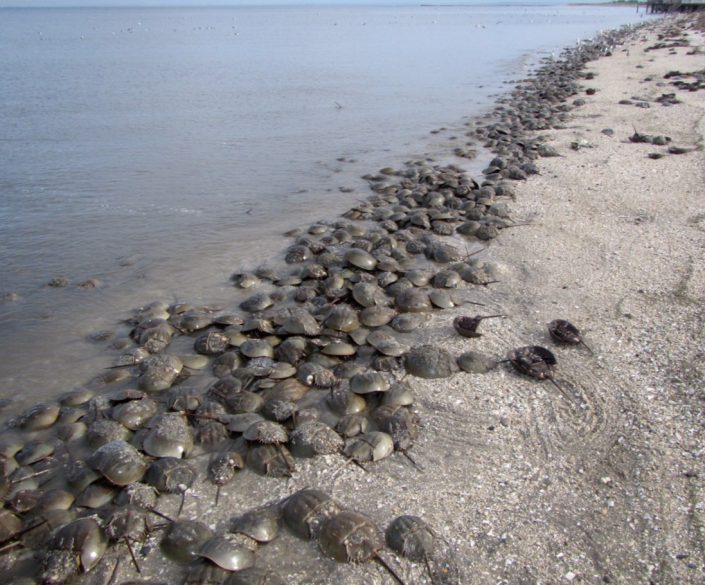
Eventually the spawn accelerated and expanded but the birds still needed to get to the eggs. If constantly disturbed by people, they will move endlessly often to lesser habitat if only to avoid disturbance. In New Jersey we prevent this. Each year for the last 15 years, the New Jersey Division of Fish and Wildlife in collaboration with Conserve Wildlife Foundation of New Jersey, close the beaches important to crabs while leaving small observation areas open to the public. The impact is non-intuitive but positive.
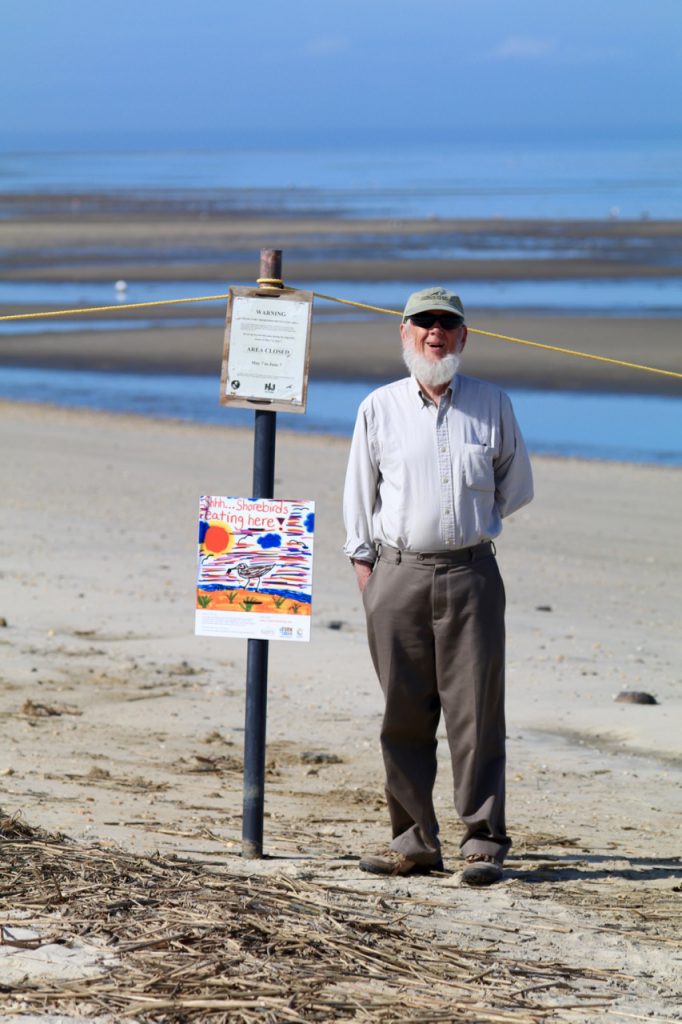
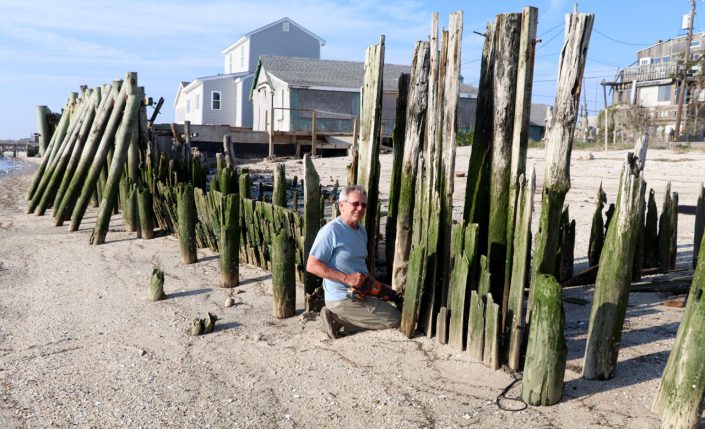
The closed beaches allow shorebirds to gorge on eggs unmolested by people: photographers and birders wanting to get one step closer for the perfect picture, compassionate people wanting to overturn crabs left stranded by the tide, or fishermen wanting to cast for the stripers that run in May. All with good intentions they scatter birds and force them to fly to other less suitable and less accessible beaches losing valuable gained weight in the process. The closures allow the birds to stay in the best places and eat like kings. Paradoxically the bird photographers and watchers end up with even better views because the birds adapt to the settled threat. Even fishermen find enough space to fish from the observation areas.
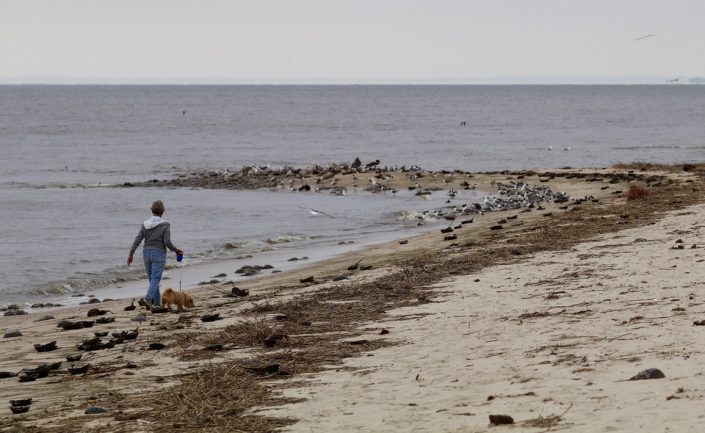
At the height of the season people could come to one of the five observation areas in the Reeds, Pierce’s Cove and see flocks of nearly 30,000 shorebirds including 14,000 red knots – two thirds of the whole population in the bay this year (as determined by air and ground counts). Photographers, birders and inquisitive people had a wonderful experience and the birds got fat.
Despite the difficulties caused by the unusually cold spring, most birds of the three species we follow reached good departure weights and by May 26th they started to leave. By June 1st most were gone and by June 2nd we advised reopening the beaches, 5 days earlier than the usual June 7th opening.
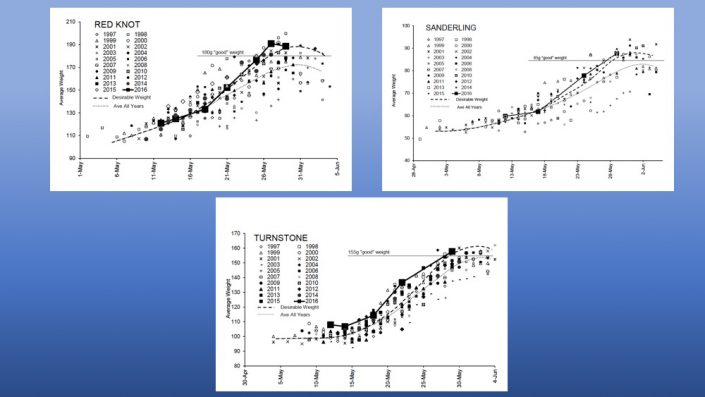
Our team of scientists, managers, students, volunteers, and stewards deserve praise for all the various projects and research conducted throughout the season, from cannon netting and bird study, resightings of previously banded birds, research on shorebird movement, research on oyster reefs and structural aquaculture, monitoring of horseshoe crabs, monitoring crab egg densities, volunteer efforts to rescue stranded crabs, to steward protected areas and tag crabs. Also, the volunteers of Citizens United to Protect the Maurice River deserve a special thanks for their logistical support for our team, they prepared over 20 dinners for 30 plus people every night of our project. Birds and Scientists all gain weight in May!
They all deserve gratitude, from the birds and horseshoe crabs, the people who love birds and horseshoe crabs and the people who love Delaware Bay.

Dr. Larry Niles has led efforts to protect red knots and horseshoe crabs for over 30 years.
